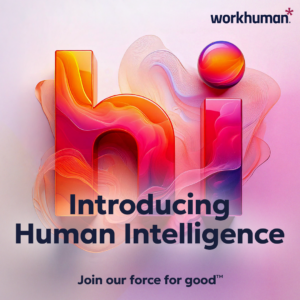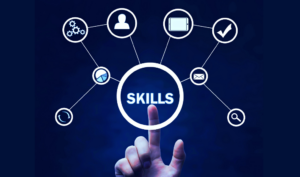
The Mini-MBA: A Stress-Free Way to Grow Your Skills and Advance Your Career
A conversation with CT Turner, President and CEO of GED Testing Service and Pearson Accelerated Pathways. Learning is a lifelong avocation, no matter what field

A conversation with CT Turner, President and CEO of GED Testing Service and Pearson Accelerated Pathways. Learning is a lifelong avocation, no matter what field

Sponsored by Workhuman. In today’s rapidly evolving workplace, upskilling isn’t just an advantage — it’s a necessity. Employees who learn new skills are more engaged,

I’m always excited about live events. There’s something irreplaceable about people coming together to celebrate, to bond, to experience. The sense of community is priceless

In the ever-evolving job market, hiring managers and recruiters are on the lookout for standout skills that set candidates apart. From highlighting proactivity and agility

In a world where technology is evolving at lightning speed, staying relevant is a challenge for both employees and employers. As industries adapt to new

The State of Women in Leadership: Room for Improvement We often hear about the business benefits of women in leadership roles. That isn’t just wishful

In a world where great talent is hard to find, emphasizing employee self-care and work-life balance gives employers a serious competitive advantage. Fostering a culture

“I know what I like, and I like what I know.” It’s easy to scoff at this old saying. Yet it applies to most of

Workplace evolution is natural. In its time, the digital workplace of the late 20th century was revolutionary. But that era has come and gone. And

As organizations move beyond the pandemic, workforce development is changing in fundamental ways. For example, wellbeing has emerged as a top workforce priority, and this

Diving into important talent strategy trends for 2024, one theme surfaces again and again. What many call “The Great Work Reset” isn’t over. Far from

If you’re a business or HR leader, you’re probably facing an enormous talent management challenge. Employers everywhere are struggling to retain and upskill existing employees,

As organizations enter a new era, we’re seeing a clear shift in management methods and practices. Traditional command-and-control styles are giving way to a more

Pinpointing people with leadership potential is a crucial talent management responsibility. After all, your company’s long-term success depends upon the ability to identify future leaders

As we take our first steps into 2024, it’s hard to imagine what this year will bring for HR and L&D. Last year was tumultuous,

These are exciting times for anyone involved in employee learning. As generative AI becomes mainstream, the learning content authoring possibilities seem endless. However, cool content

Today’s workforce is rapidly changing, as Boomers pass the baton to their Gen X, Millennial, and Gen Z counterparts. However, for many organizations, this transition

In today’s fluid job market, companies everywhere are seeking innovative ways to tap into a more skilled, diverse, adaptable talent pipeline. This is a key

A career, by definition, is something that develops over an extended period of time. In other words, a successful career is not born — it

Corporate learning and development (L&D) is at a crossroads. Today’s workforce desperately needs a skills update to prepare for the future of work, and old-school

Data has percolated into every area of business — from the hiring process, to marketing programs, to charting a company’s strategy for the future. In

At what point in a career does learning stop? Hopefully, never! Most business and technical professionals realize that becoming proficient in a job and becoming

After years of upheaval that have redefined society, business and work, we’ve entered a period some call the “Great Reflection.” During this era of mindfulness,

Imagine you’re a hard-working entry-level employee who’s been in your current position for less than a year. Your skills are solid, but they don’t help

Sponsored by Learnsoft The Skills Gap is Growing. So is Pressure on L&D Demand for skilled employees seems limitless. Modern technology and automation are displacing